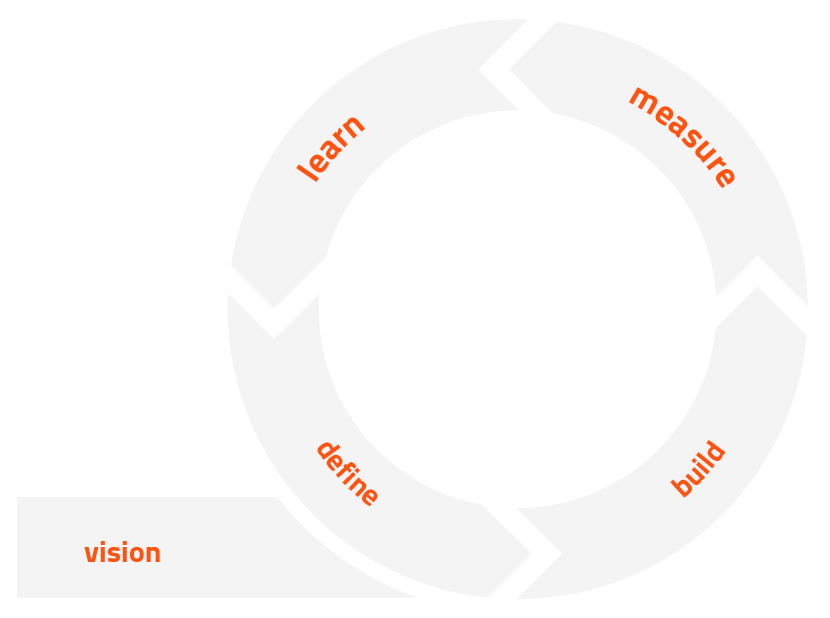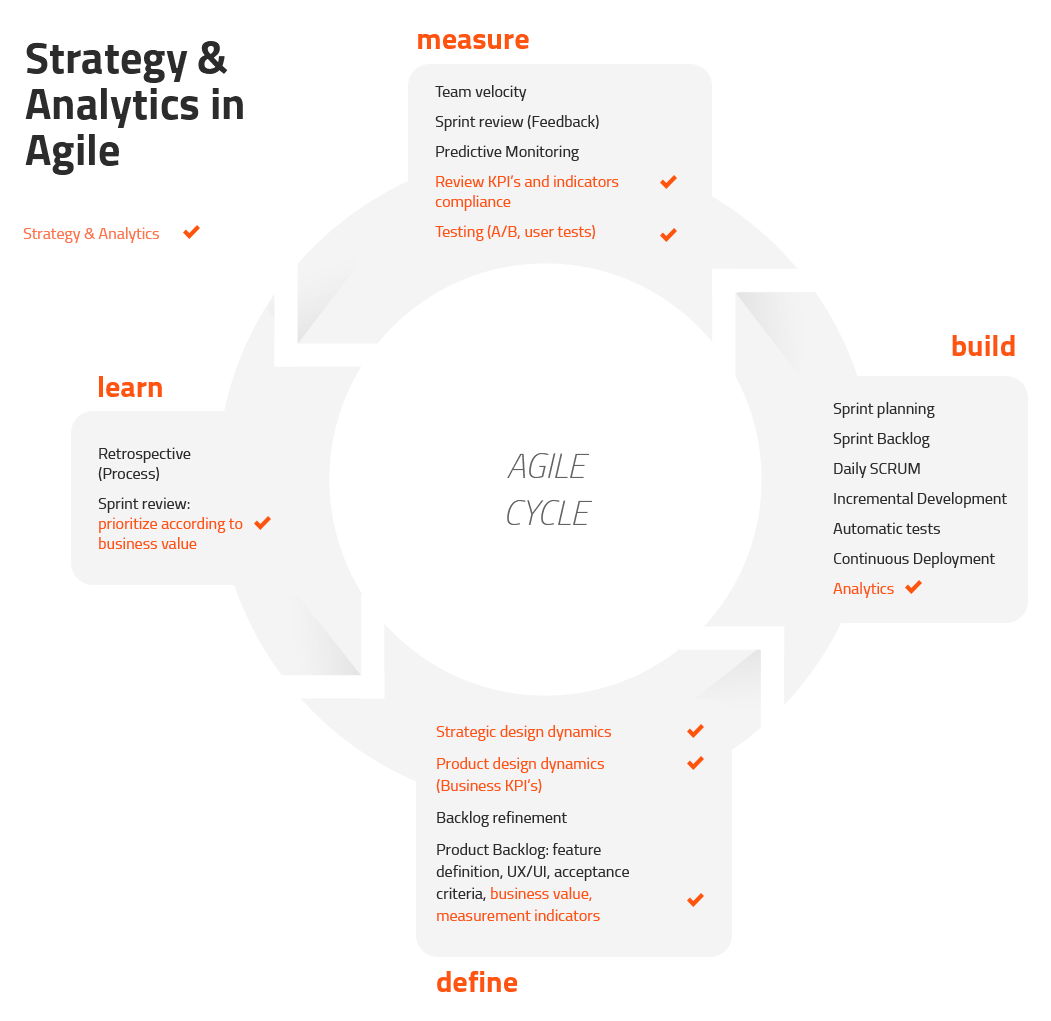Internet users are becoming more demanding and the extent of the services available in the network is increasing. In this scenario, it is increasingly difficult to differentiate between so much competition and the concept of brand fidelity is disappearing. In fact, if we do not take care of them, users will not hesitate to change us if they find something better.
The customer has become the centre of everything and Time to Market becomes increasingly important. Often the one with the best offer fails, while the one who reaches customers first succeeds. It is no longer worth just looking at one’s navel, but one must constantly keep your eyes on the market, because the moment the competition launches something new, the countdown to react gets started.

How is product strategy defined in this new digital environment?
The goal is no longer to have more features than the competition, but a tighter and more outstanding offer. Therefore, instead of thinking about a product with the greatest number of features possible, the ideal is to stay within the minimum necessary for the product to make sense. This reduced version, which is often called MVP (Minimum Viable Product), is the one that should be brought to market as soon as possible.
From this stance, we should not add features based only on our intuition and expertise, as has been done traditionally, but, instead, based on customer response to this MVP: most used features, user requirements, problems generated in the call center, etc.
That is why analytics (whether quantitative or qualitative), supported by specific and technical tools such as Test A / B or MVT (Multi Variable Test), plays a major role in this process of qualification of each functionality, as it is the only truthful and objective way of knowing whether or not a business idea works in the market, as well as analysing user behaviour in interaction with this idea.

This radically changes the way projects in the Internet are built, which are no longer something closed, with a beginning and an end, to become something alive to be improved in iterative cycles. This idea, which is already commonly accepted in the realm of software development, even in the more traditional enterprises, is not so widespread regarding product strategy, where many remain stuck thinking that while construction should be done in iterative cycles, strategic design and even interaction design should be completed (or almost) before development begins.
This way of thinking limits the action space, since following the plan established months earlier can be hazardous in a world as changeable as the Internet, in addition to not allowing recovery of the investment until the launch of the complete product, at a much later time.
The Lean Startup movement is already focusing since 2008 on this idea that the strategy should also be defined in iterative cycles. Steve Black has a very widespread phrase among the start-ups that says: "No business plan survives first contact with a customer”, so why spend months to define a complete product strategy if you can do a test in a short time to validate whether or not it will work?
Alexander Osterwalder (author of Business Model Canva**s) took a step further on this idea in 2010, adding that it is also applicable to strategic design in a broader business scope: "Once we understand how Internet business models work, we understand that they can be prototyped in the same way as product prototypes are". Hence, in the digital world, we must not only address the construction in iterative cycles, but also the strategy.
How does all this fit into scrum?
Scrum is the most widely used method of developing projects in Internet. However, in my own experience I have seen that it’s incorrect application is very common, losing focus in meetings, estimates, schedules... and forgetting that the main objective, according to Scrum Guide, is to maximize value.
Consequently, integrating product strategy and analytics, far from changing nothing in scrum, only solves two errors that are discussed in the vast majority of projects:
- Each Product Backlog item should have a business value associated, the value that this functionality adds to a product, preferably in Euros. Understandably, it is a guiding value that is hard to calculate individually for each functionality, but fundamental together with the cost estimate when prioritizing the next functionality to be addressed.
- It is common to convert the Sprint Review to a misnamed "demo" and forget one of the key parts of this joining, as my partner Ana reminded me this week: "Choose what we will do in the next sprint as a function of market acceptance of the features that have already been delivered".
To begin integrating strategic design into scrum, the first thing we must think about is that traditional consulting profiles do not serve us.
Simplifying a bit, two profiles are mainly needed in the team, which is scarce in traditional businesses, and I have seldom seen in an Agile team:
- The first is a digital strategy consultant, one without a tie. It must be an "Internet" profile very far from the image of a traditional consultant who makes deliverables based on copy & paste with Gartner graphs. We need a profile that works in a team, an expert in moderating co-creation dynamics, always trying to exploit the competitive advantages provided by the latest technological trends. His contribution is very close to some tasks commonly performed by user experience consultants, so some of them may come from that discipline, but placing, in that case, a greater focus on business.
- The second profile is a digital marketing analyst, who knows analytics tools well, in addition to the various digital channels: mobile apps, social medias, etc. Said profile should be able to define the KPIs of the product, as well as the intermediate indicators to be measured, in order to draw useful conclusions and improvements based on the interpretation of these metrics.
In agile methods, the Product Owner is the person responsible for the product, from whom superpowers are expected to define, prioritize, maximize the value of the development team, etc. Well, these two profiles, along with whatever specific role of user experience, would complement the Product Owner there where he never reaches, to fulfil their primary function: to maximize the value of the product and the work of the team.

I focus only on these two profiles because it is more difficult to see them integrated in a scrum team and because I only focus on profiles that concern the purely strategic part, although obviously many other contribute their part.
Initial "vision" phase
If we accept that the best way to approach an Internet product is to cycle iteratively and incrementally, I agree that the first iteration should be slightly different from the rest.
We call it Sprint 0, despite not overly pleasing for purists, but call it whatever you may call it, the reality is that before you start building a digital product you must be certain of a few things: positioning and high level strategy; visual identity; the technology to use and an outline of the outstanding features of your product, so that it does not later become a disjointed and meaningless mix of functionality. This first phase of "vision" should be as short as possible until these objectives are achieved.

At this stage, the strategy of the product should be defined in a very different way from traditional consulting, in a more practical and effective way, with group dynamics and very visual deliverables.
You need to combine different dynamics depending on the degree of maturity of the idea: from defining new business models, to defining product strategy and the customer experience.
It is also necessary to combine different profiles depending on the dynamics, to complete the vision from all points of view: technology, business, user experience... Including an end customer vision where we want to arrive with our product.
The digital strategy expert and the marketing analyst are the ones who should lead this phase, along with a profile closer to UX&UI who would focus more on the visual part and bring a "customer centric" perspective.
The first one define the business model and product strategy (what), and also moderates dynamics. The second one brings the vision of ROI (why), defining some KPI's to justify the need for the product on the market and indicators to enable evaluating whether the ideas are working as initially expected.
Once the business model and product strategy have been defined, this first phase ends with what is called "Product Backlog" in Agile, a prioritized list of the functionalities of the product to be built.
With this Product Backlog we ought not to think about adding, as we mentioned before, but we should think about removing, to obtain a subset that will be our MVP.
Construction cycles or Sprints
Starting from the list of features of our MVP, construction cycles begin, where the digital strategy profiles and digital marketing do not disappear, although their workload may decrease.
One of the most important lean principles is not to waste time on unnecessary tasks. That's why no time is lost in defining in detail all the features of the Product Backlog, since we do not know if they will really be addressed at some point.
This incremental definition is made within each Sprint in a process of "refinement" focused solely on the features that will be built in the next Sprint. In this refinement, the digital strategy profile is responsible for continuing to generate new tentative ideas, to be included as new items in an always live product backlog.
Meanwhile, the digital marketing analyst defines measuring indicators associated with each item of the Product Backlog.** These indicators will then be translated mainly into integrations with Google Analytics, which will be addressed by the development team.
In addition to advancing in the definition, this profile does not lose sight of the functionality already delivered, analysing indicators of it during the Sprint to suggest improvements and influence the prioritization of the following features to address.
All cycles must be equal, about 3 weeks duration, followed by a functional increase delivery which is reviewed in the "sprint review". Regardless of whether the project is already in production, it must incorporate in all deliveries: quality, safety, etc.; in addition to the implementation of the indicators corresponding to each functionality, as we have just commented.
It will be decided by the Product Owner whether the product is ready for production. The only difference is whether we have market feedback about the delivery, hence the MVP should be launched in the shortest time possible.
Here is a summary of the additions to scrum in order to incorporate the strategic design, along with the parts already included within the method, but that are usually omitted:

Someone may ask: does incorporating all this not make the project more expensive? First of all, these are surely things that are already being done outside scrum in an isolated and disorganized way, so integrating as much as we can optimizes and reduces the overall cost.
Secondly, we could say that what would be expensive is not to incorporate them and invest time and money in long developments that later have no return, or that it is much more expensive to measure nothing and then try to compete blindly in the Internet.
Conclusions
Agilism has the scourge of having been created initially to develop software, but it holds objectives and principles that are applicable well beyond software.
Incorporating product strategy and analytics into scrum is not complicated and under no circumstances contradicts its principles, as it covers the part related to adding value, which is commonly forgotten. Some points of scrum cannot be fulfilled well, such as each ítem of Product Backlog which has a business value, or reprioritizing based on market acceptance without including this part of strategy and analytics.
This integration of Agile and digital strategy enables a qualitative leap regarding how to address traditional strategic consulting and even changes the way of building new Internet businesses.
Comments are moderated and will only be visible if they add to the discussion in a constructive way. If you disagree with a point, please, be polite.




Tell us what you think.